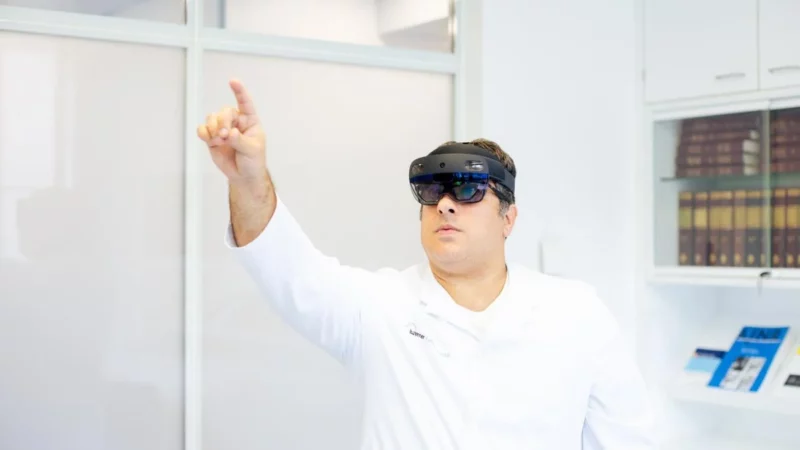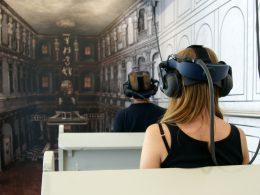A research project in Lucerne uses augmented reality (AR) to make X-rays visible. The aim is to improve radiation protection.
AR glasses in education
Location-independent, safe and repeatable
"The biggest challenge in radiation protection is that you can neither perceive the radiation itself nor the effectiveness of your own protective behaviour in everyday work," explains Dr phil. Thiago Lima, Senior Diagnostic Medical Physicist at LUKS. He is conducting the project as part of his habilitation at the University of Lucerne; it is partly funded by the research grant from the Swiss Society for Radiobiology and Medical Physics (SGSMP). "AR enables employees exposed to radiation to learn important practices to further reduce occupational health risks," Lima says. For Tobias Kreienbühl, project manager on the part of HSLU, augmented reality also has great potential in medical education. "An important advantage is that the technology is independent of time and place," he explains, "so you don't have to rely on specially equipped premises for training." With AR, learning content can be conveyed realistically and without safety concerns, while exercises can be repeated as often as desired.
Luks could adopt technology
The first tests were successful. The conclusion: the method is feasible and promising. Now the research team will gather further experience from the application and develop it further. "Our goal is to prove the effectiveness of the training compared to conventional training without augmented reality," says Lima. If this is successful, the LUKS will examine how augmented reality can be incorporated into radiation protection training in the long term.









